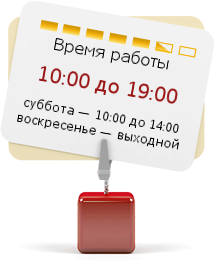СодержаниеInroduction……………………………………………………………. 3
1. Critical thinking………………………………………………………5
2. Critical reading strategies…………………………………………….6
3. Bloom\'s Taxonomy…………………………………………………10
4. Thinking about Reading and Writing………………………………..17
5. Fact, opinion and inference…………………………………………..22
6. Summary writing……………………………………………………27
7. Vocabulary development………………………………………………29
8. Methods to effectively read a textbook…………………………………30
9. Critical thinking and reading……………………………………………33
Conclusion……………………………………………………………….37
Bibliography………………………………………………………………39ВведениеIntroduction.
Reading is of great educational importance, as reading is a means of communication, people get information they need from books, journals, magazines, newspapers, etc. Through reading in a foreign language the pupil enriches his knowledge of the world around him. He gets acquainted with the countries where the target language is spoken.
Reading develops pupils` intelligence. It helps to develop their memory, will, imagination. Pupils become accusunaided practice in further reading. The content of texts, their ideological and political spirit influence pupils. We must develop in pupils such qualities as honesty, devotion to and love for our people of other countries, the texts our pupils are to read must meet these requirements. Reading ability is, therefore, not only of great practical, but educational, and social importance, too.
Reading is not only an aim in itself, it is also a means of learning a foreign language. When reading a text the pupil reviews sounds and letters, vocabulary and grammar, memorizes the spelling of words, the meaning of words and word combination, he also reviews grammar and, in this way, he perfect his command of the target language. The more the pupil reads, the better his retention of the linguistic material is. If the teacher instructs his pupils in good reading and they can read with sufficient fluency and complete comprehension he helps them to acquire speaking and writing skills as well. Reading is, therefore, both an end to be attained and a means to achieve that end.
When one says that one can read, it means that one can focus one`s attention of the meaning and not on the form: the pupil treats the text as a familiar form of discourse and not as a task of deciphering. ”The aim of the teacher is to get his pupils as quickly as possible over the period in which each printed symbol is looked at for its shape, and to arrive at the stage when the pupil looks at words and phrases, for their meaning, almost without noticing the shapes of the separate letters.” A good reader does not look at letters, not even at words, one by one, however quickly; he takes in the meaning of two, three, or four words at a time, in a single moment. The eyes of a very good reader move quickly, taking long ”jumps” and making very short ”halts”. We can call this ideal reading ”reading per se”. Reading per se is the end to be attained. It is possible provided:
(1) the reader can associate the graphic system of the language with the phonic system of that language;
(2) the reader can find the logical subject and the logical predicate of the sentences.
(3) the reader can get information from the text (as a whole).
These are the three constituent parts of reading as a process.
As a means of teaching reading a system of exercises is widely used in school, which includes:
1. graphemic-phonemic correspondence in the English language;
2. structural-information exercises which help pupils to carry out lexical and grammar analysis to find the logical subject and predicate in the sentences following the structural signals;
3. semantic-communicative exercises which help pupils to get information from the text.
The actions which pupils perform while doing these exercises constitute the content of teaching and learning reading in a foreign language.ЗаключениеCONCLUSION.
Reading is a complex process of language activity. As it is closely connected with the comprehension of what is read, reading is a complicated intellectual work. It requires the ability on the part of the reader to carry out a number of mental operations: analysis, synthesis, induction, deduction, comparison.
Reading as a process is connected with the work of visual, kinesthetic, aural analyzers, and thinking. The visual analyzer is at work when the reader sees at text. While seeing the text he ”sounds” it silently, therefore the kinesthetic analyzer is involved. When he sounds the text he hears what he pronounces in his inner speech so it shows that the aural analyzer is not passive, it also works and, finally, due to the work of all the analyzers the reader can understand thoughts. In learning to read one of the aims is to minimize the activities of kinesthetic and aural analyzers so that the reader can associate what he sees with the thought expressed in reading material, since inner speech hinders the process of reading making it very slow. Thus the speed of reading depends on the reader`s ability to establish a direct connection between what he sees and what it means.
Drill, never an end in itself, is essential in developing creative thinking and discriminating evaluation. The teacher invests drill with significance when the pupil realizes its relationship to achievement.
In order to think clearly and accurately, the learner must have an adequate vocabulary, for his thinking is carried on in concepts or symbols, usually words. To draw correct inferences, form logical conclusions, and react intelligently to ideas, he must be able to extract the meaning of the material. To understand world events, he must be familiar with maps and charts.
To open the storehouse of information in the library, he must know how to use reference books, encyclopedias, and the card catalog. To utilize the resources he has discovered, he needs skill in summarizing, analyzing, and organizing the material he wishes to use.
Critical thinking does not require total objectivity or the removal of the self from the thinking process; in fact, the process encourages both the emotional and rational, the personal and nonpersonal. For example, asking analytical questions about values, ideas and actions may produce anxiety. We are sometimes fearful of the consequences of considering new alternatives, of questioning our assumptions. The challenge then is to be aware of how these emotions affect us.
Maybe the intensity of emotions and amount of information to be considered explain, in part, why we just dive into some of our most important choices. Consider how we make the major decisions of our lives. How do we decide on our vocation, work policies and programs, our schools and our mates? How do we decide whether or not to have children and when? Or how to raise them?
Whatever capacities we use to wade through the murkiness of life, certainty may not always be possible before acting, especially on important and complex matters. But abandoning automatic behavior, or being contemplative about our own beliefs, emotions and values, can be liberating. Critical thinking expands our powers and possibilities and relieves us of the illusion and burden that we can be completely objective.
Instead, the goal is to be aware of our subjective screens, making them explicit in our thinking and communication with others. This, in turn, will encourage others to be more aware and open, leading all participants to a level of \"intersubjectivity.\" Such sharing of perspective creates an environment where trust can develop more freely.ЛитератураBIBLIOGRAPHY.
1. Bloom\'s Taxonomy and Critical Thinking: http://www.kcmetro.cc.mo.us/longview/ctac/blooms.htm
2.\"Coaching Winners: How to Teach Critical Thinking\" contributed by Bonnie Weaver Duldt, Ph.D., R.N., Duldt & Associates, Incorporated, Front Royal, Virginia .
3. Critical Thinking Across the Curriculum Project - Longview Community College:http://www.kcmetro.cc.mo.us/longview/ctac/index.htm
4. Critical Thinking for Reading, Understanding, Writing and Speaking by Ruth M. Schimel, Ph.D.
5. \"Critical Thinking: What It Is and Why It Counts\" by Peter A. Facione, Dean of the College of Arts and Sciences, Santa Clara University.
6. Developed at Marist College, Academic Learning Center by Victoria Sarkisian, Marianne Toscano, and Karen Tomkins-Tinch. Updated April 10, 2003 by Kerry Casey.
7. Developing Critical Thinkers: Challenging Adults to Explore Alternative Ways of Thinking and Acting by Stephen D. Brookfield.
8. Elder, L. and Paul, R. \"Critical thinking: why we must transform our teaching.\" Journal of Developmental Education, Fall 1994.
9. Ellis, D. Becoming a Master Student, 1997.
10. French F.G. The Teaching of English Abroad. Oxford University Press, London, 1961.
11. Fries Ch. C. Linguistics and Reading. Toronto, 1963.
12. Helping High-School Students Read Better by Elizabeth A. Simpson.
13. How We Think by John Dewey.
14. Kiruhi, Macharia. Teaching methodologies: An essential handbook for instructors and student teachers. – Nairobi: Press Trust Printers, 1987.
15. Mindfulness by Ellen J. Langer.
16. Pettit, Philip. The concept of structuralism: A critical analysis. Berkley; Los Angeles: University of California Press, 1977.
16. Rogova G.V. Methods of teaching English. Leningrad, 1975.
17. The Social Construction of Reality: A Treatise in the Sociology of Knowledge by Peter L. Berger and Thomas Luckmann.
|
|



